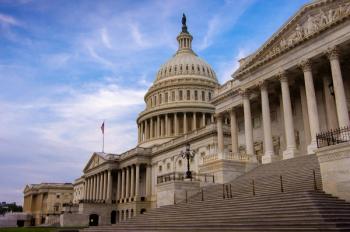
Wearable health monitors generate data, create challenges for diabetic patients
Older adults are interested in results, but technology needs to stick and be easy to use.
Devices to monitor health in patients can be helpful if the technology is easy to use and patients use them.
A
Among the findings: Diabetic participants “were very interested in understanding their numbers,” such as glucose levels, and what those meant for their health. But the devices were tricky to use, “suggesting a need for device manufacturers to improve wearability and usability of the devices,” according to a
“This is a whole area of health technology that needs study,” study leader Michael Weiner, MD, MPH, said in the news release. “There's hardware involved, which is the device itself. There's software involved, which is reading, organizing, interpreting, and communicating the data from the device.
“Knowing how the technology works in the real world and the impact of the technology on usability and ultimately on health outcomes is important,” said Weiner, a research scientist at Regenstrief Institute, chief of health services research at the Richard L. Roudebush Veterans Affairs Medical Center, and a professor of medicine at Indiana University School of Medicine.
Challenges with technology
In an initial trial of continuous glucometer use, devices had a faulty adhesive that created a challenge for 10 patients aged 50 to 85 years. They also had difficulty interpreting graphs produced by the device.
In a subsequent study, 70 older adults with diabetes wore
Nearly one in four said before that study, they had not checked blood sugar. Researchers found 73% of 70 participants had
“When we looked for hypoglycemia in an urban population of older adults who receive care in a safety-net health care institution, we found that it’s extremely common, more common than anybody knew previously, because no one had actually looked,” Weiner said.
Having tech handy
Weiner noted smartphones commonly are used with continuous glucometers. But participants who received them did not always carry them, so they missed or ignored one-third of daytime prompts about medications, behaviors, and symptoms.
Electronic medication bottles have potential to help, but study participants didn’t use them correctly or didn’t appropriately transfer pills to the bottles, Weiner said.
The study, “Continuous Glucose Monitoring and Other Wearable Devices to Assess Hypoglycemia among Older Adult Outpatients with Diabetes Mellitus,” was published Jan. 18 in the journal Applied Clinical Informatics. The study had support by the U.S. Agency for Healthcare Research and Quality.
Newsletter
Stay informed and empowered with Medical Economics enewsletter, delivering expert insights, financial strategies, practice management tips and technology trends — tailored for today’s physicians.








